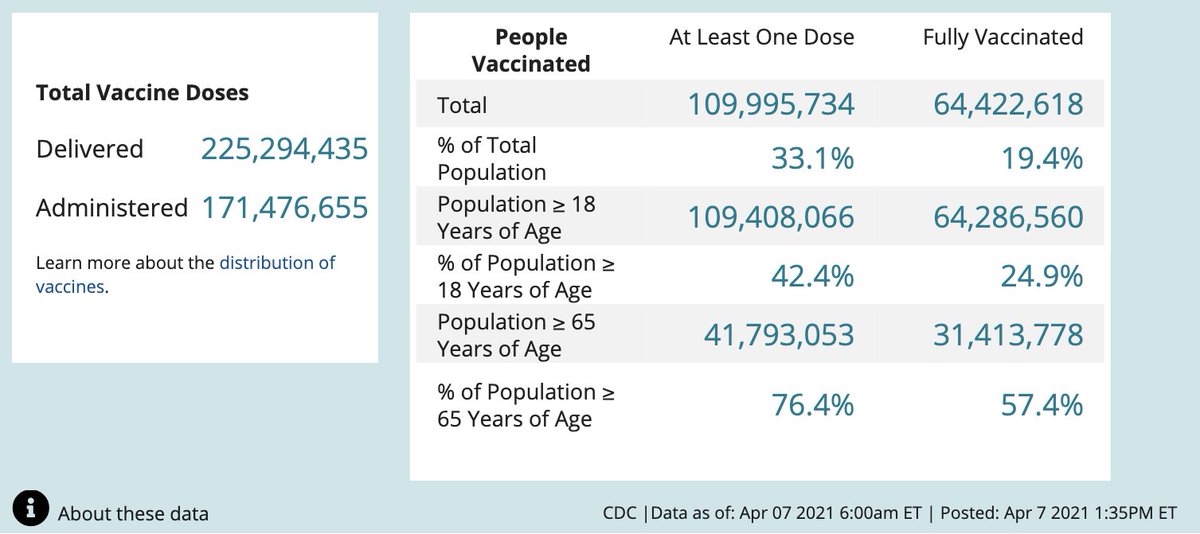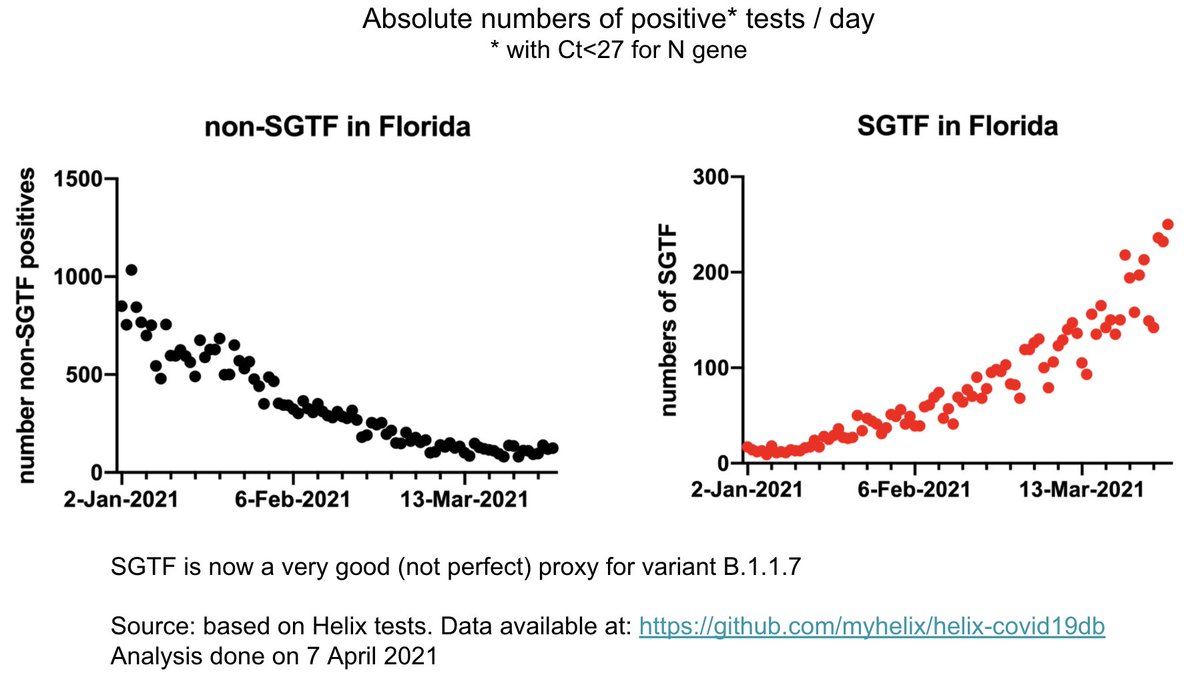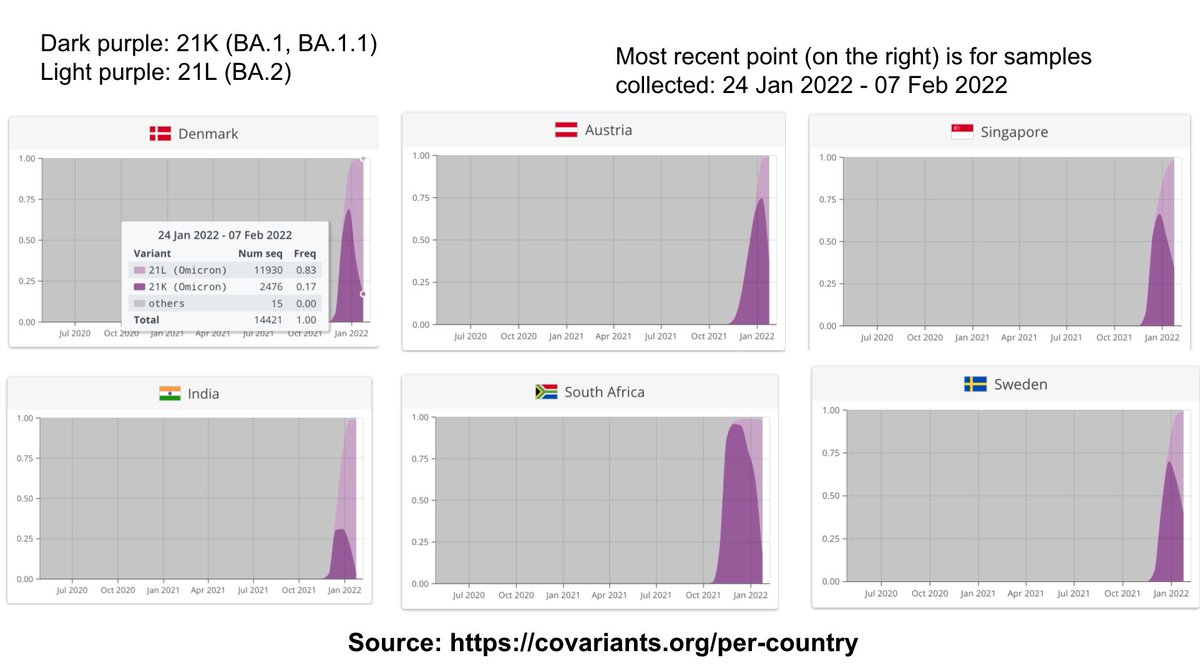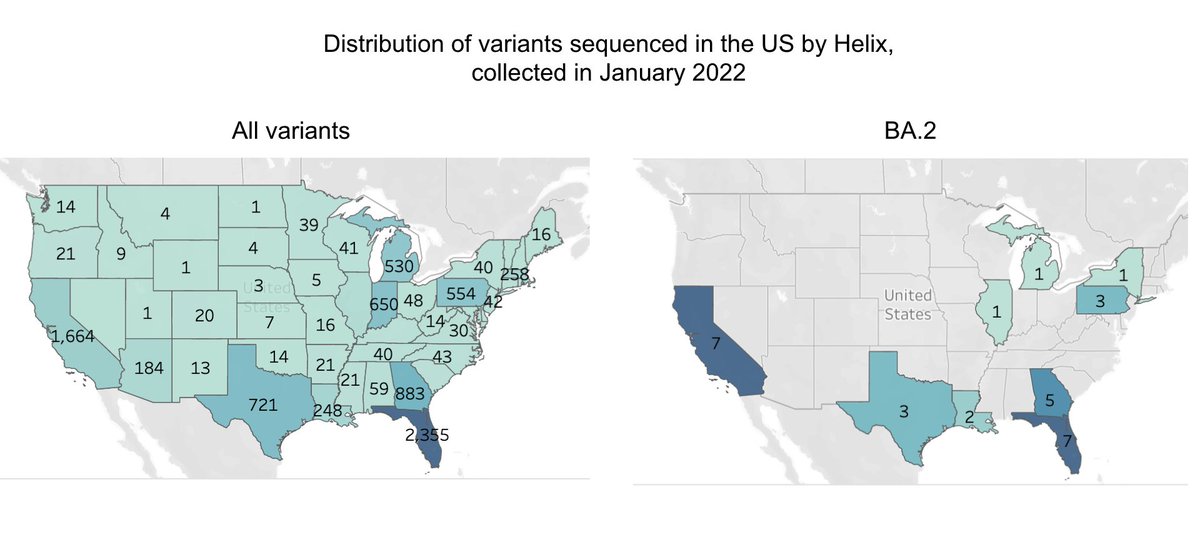Weekly update from @my_helix SARS-CoV-2 surveillance program.
Check dashboards here: public.tableau.com/profile/helix6…
As reported by @CDCDirector, B.1.1.7 represents more than 50% of cases in US. And fraction still increasing.
See 7 states where Helix tests a lot. Details in 🧵
Check dashboards here: public.tableau.com/profile/helix6…
As reported by @CDCDirector, B.1.1.7 represents more than 50% of cases in US. And fraction still increasing.
See 7 states where Helix tests a lot. Details in 🧵

2/
Before going in details on B.1.1.7, here are some stats on vaccinations in US from @CDC. What an effort! I am very optimistic for the US.
Also important to note that all vaccines work very well against the B.1.1.7 variant. It is really incredible how well they work.
Before going in details on B.1.1.7, here are some stats on vaccinations in US from @CDC. What an effort! I am very optimistic for the US.
Also important to note that all vaccines work very well against the B.1.1.7 variant. It is really incredible how well they work.

3/
California
Fraction of B.1.1.7 is still increasing. Numbers are small, but I think we may have enough information to look closely at direct competition between B.1.429 and B.1.1.7. Hypothesis is that B.1.1.7 is more transmissible.
California
Fraction of B.1.1.7 is still increasing. Numbers are small, but I think we may have enough information to look closely at direct competition between B.1.429 and B.1.1.7. Hypothesis is that B.1.1.7 is more transmissible.

4/
Quick note on SGTF
stands for S Gene Target Failure
Also called S Gene drop-out
When we do a PCR test, we look at S gene, N gene & ORF1a. B.1.1.7 variant has a deletion in S gene interfering with test leading to a positive signal in N & ORF1a targets, but not S target.
Quick note on SGTF
stands for S Gene Target Failure
Also called S Gene drop-out
When we do a PCR test, we look at S gene, N gene & ORF1a. B.1.1.7 variant has a deletion in S gene interfering with test leading to a positive signal in N & ORF1a targets, but not S target.
5/
Florida
Y-axis is different, but it is still clear that B.1.1.7 counts are growing steadily, while non-B.1.1.7 cases are now flattening (after a long decrease).
Florida
Y-axis is different, but it is still clear that B.1.1.7 counts are growing steadily, while non-B.1.1.7 cases are now flattening (after a long decrease).

6/
Georgia
In our tests, one of the states with highest fraction of cases being B.1.1.7. Counts increasing, but slower than MI for example.
Georgia
In our tests, one of the states with highest fraction of cases being B.1.1.7. Counts increasing, but slower than MI for example.

8/
Michigan
There is a lot of talk about MI. Because cases increasing fast. Counts below are pretty clear.
Looks like conditions start of Feb favored virus (as non-SGTF also started to rise), and B.1.1.7 took fully advantage of it.
Michigan
There is a lot of talk about MI. Because cases increasing fast. Counts below are pretty clear.
Looks like conditions start of Feb favored virus (as non-SGTF also started to rise), and B.1.1.7 took fully advantage of it.

11/
This is it for this update.
For other states check our dashboard. You can also check @nytimes nytimes.com/interactive/20…
@LaurenLeatherby does a much better job than me at presenting these numbers :)
This is it for this update.
For other states check our dashboard. You can also check @nytimes nytimes.com/interactive/20…
@LaurenLeatherby does a much better job than me at presenting these numbers :)

• • •
Missing some Tweet in this thread? You can try to
force a refresh


















